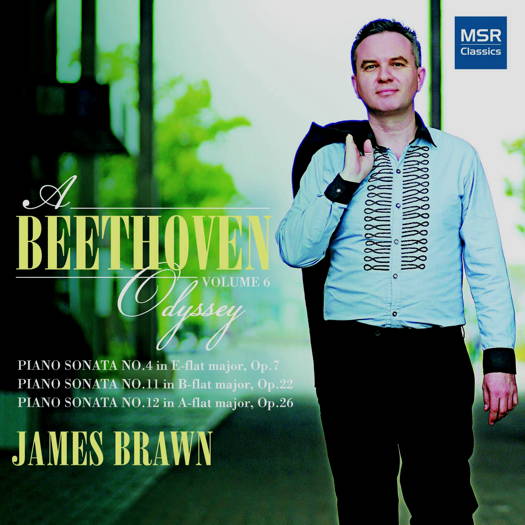- Sorabji Archive
- Thomas Weelkes
- Schnittke
- Josef Matthias Hauer
- Wilms
- Tchaikovsky: Swan Lake
- North Carolina
- Nico Muhly: Wedge
 DISCUSSION: John Dante Prevedini leads a discussion about Composers, individuals or collective?, including contributions from David Arditti, Halida Dinova, Robert McCarney and Jane Stanley.
DISCUSSION: John Dante Prevedini leads a discussion about Composers, individuals or collective?, including contributions from David Arditti, Halida Dinova, Robert McCarney and Jane Stanley.
 DISCUSSION: What is a work? John Dante Prevedini leads a discussion about The performing artist as co-creator, including contributions from Halida Dinova, Yekaterina Lebedeva, Béla Hartmann, David Arditti and Stephen Francis Vasta.
DISCUSSION: What is a work? John Dante Prevedini leads a discussion about The performing artist as co-creator, including contributions from Halida Dinova, Yekaterina Lebedeva, Béla Hartmann, David Arditti and Stephen Francis Vasta.

Great Character
LUCAS BALL listens to the latest volume
in James Brawn's Beethoven series
'... the sort of technical control and agility that you get from many world class artists.'
I can't help but feel the need to compare and contrast what James Brawn does with other artists' recordings of these sonatas, and it is very interesting listening to the different approaches available. They play in different acoustic settings to James Brawn, their tempi can be subtly different to his and their apparent approach to grace notes can be rather different. It is his approach to grace notes and ornaments that seems to set Brawn aside from other interpreters.
In the Adagio con molta espressione (the second movement of Sonata No 11 in B flat Major, Op 22), James Brawn treats the grace notes in the score in such a way that they are 'equal' to 'essential' ones.
Listen — Beethoven: Adagio con molta espressione (Sonata No 11, Op 22)
(track 10, 0:00-0:31) © 2019 James Brawn :
Curiously enough, Brawn plays the ornaments elsewhere as we might expect. This includes the right hand acciaccaturas and trills in the theme at the beginning of the A flat Sonata. Brawn also plays grace notes in a conventional way in the Sonata in E flat, Op 7.
Mordents are also either not as clear as they could be or are played so fast that listeners may not be able to hear each note making up the mordent.
Listen — Beethoven: Allegro molto e con brio (Sonata No 4, Op 7)
(track 1, 5:19-5:25) © 2019 James Brawn :
Other interpreters of this same work make it much easier to discern the individual notes within the mordent. (The Richard Goode recording is perhaps a good example of this.)
There is also great control over finger dexterity in the Rondo movement of the No 11 Sonata in B flat major as well, and in the 'Minore' section of the 'Menuetto' movement of the same sonata.
Listen — Beethoven: Minore (Sonata No 11, Op 22)
(track 11, 1:40-2:29) © 2019 James Brawn :
In the first theme of the Menuetto, James Brawn treats the grace notes as grace notes like other pianists do (rather than treating them as 'written out' notes). I think this makes more sense and honours the score. Brawn also plays 'turns' and other grace notes in a similar way to other interpreters - Daniel Barenboim, Artur Schnabel and Richard Goode, for example - in the slow movement of Sonata No 4 in E flat major, Op 7.
All these things said about ornaments and grace notes, so much else of what Brawn does has the sort of technical control and agility that you get from many world class artists. He also gives the music great character applying attention to 'very loud' and 'very soft' moments in the score and everything in between. The inward-looking Funeral March in the A flat major sonata does get a very workable funereal treatment.
Even within the introspective feeling, there can be surprises with detached notes (staccato) and modulations providing the interest. I get the impression Brawn has given much thought to these. The strident 'explosions' that come in the middle section work well too.
Listen — Beethoven: Maestoso andante (Sonata No 12, Op 26)
(track 7, 2:03-3:00) © 2019 James Brawn :
There is also a wonderful lyrical sound at the opening (theme) of Sonata No 12 in A flat major, Op 26, giving us a 'starter' to the variations that are to come.
Variation II has admirable control and excitement as well.
Listen — Beethoven: Andante con variazione (Sonata No 12, Op 26)
(track 5, 2:26-3:25) © 2019 James Brawn :
I would be interested in what Brawn does in the other volumes of his A Beethoven Odyssey series.
Copyright © 22 November 2019
Lucas Ball,
Worcestershire UK

CD INFORMATION - JAMES BRAWN: A BEETHOVEN ODYSSEY 6
FURTHER INFORMATION - JAMES BRAWN


